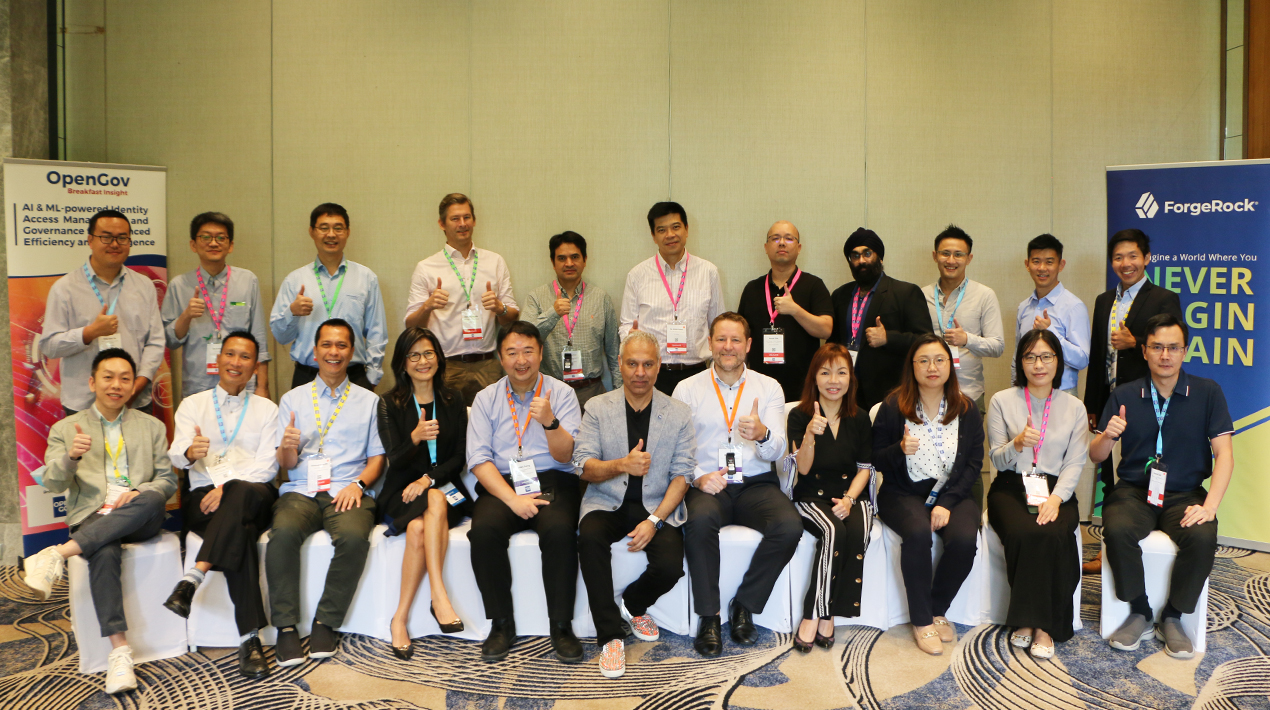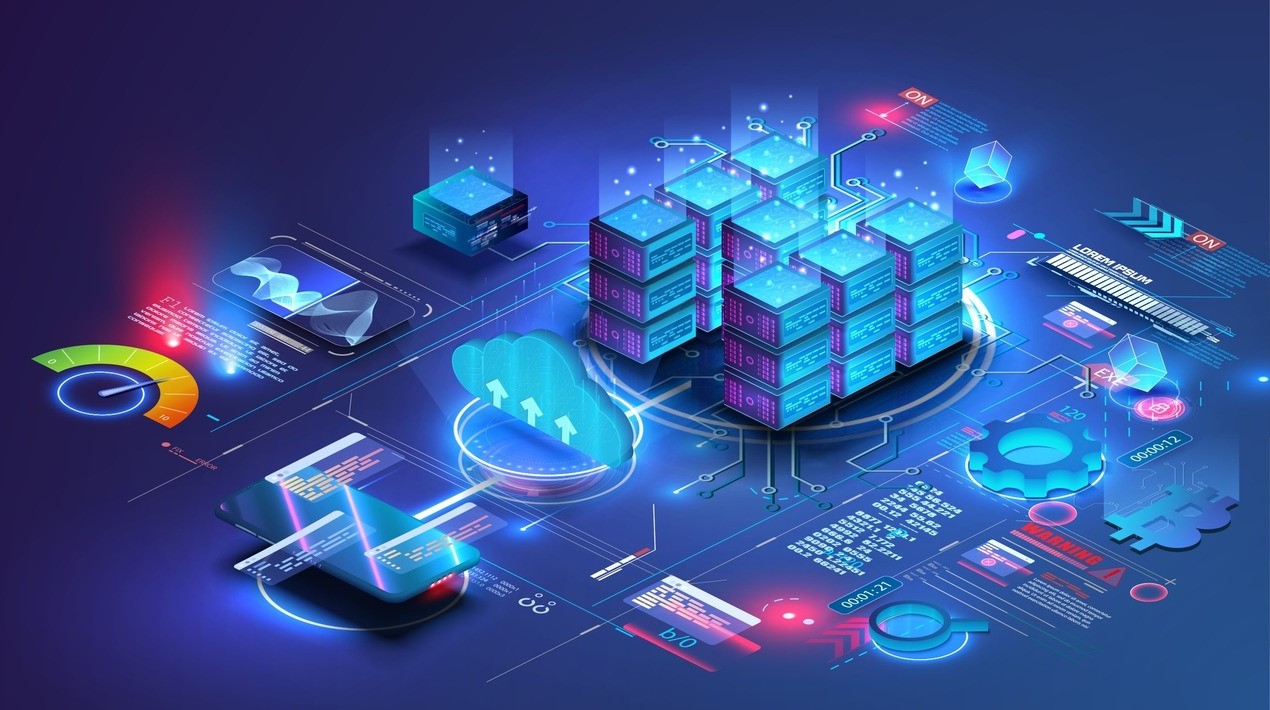
The growing digitalisation in large enterprises often leads to the dispersion of vast quantities of data across multiple clouds or on-premise environments, accompanied by an increased number of devices, stakeholders, and users accessing the system from various locations.
Despite the intended benefits of such technology in enhancing efficiency for these firms, ensuring the security of user identities and access can pose significant challenges.
The proliferation of cyber threats has intensified security concerns due to the granting of unauthorised or excessive access to systems, data, or applications by users, highlighting the need for enhanced security measures.
Ensuring the protection of systems and data requires users to undergo identity authentication and authorisation processes as a prerequisite for accessing secure data, establishing a robust security framework.
With the increasing adoption of hybrid work models, the use of personal devices or internet connection networks to remotely access systems greatly increases dangers and threats. Additionally, the expansion of organisations’ online presence has increased their attack surface.
As security concerns continue to rise, there is an increasing emphasis on the need for robust access controls and policies. In this context, the principle of least privilege access is expected to play a critical role in ensuring the security of enterprises and their sensitive data.
The entire firm may be exposed to cyberattacks and data leaks due to such vulnerabilities. To effectively manage user access and identities in expanding businesses with complex IT systems, comprehensive security components and procedures are needed. Although there are many options, putting them into practice can be more expensive.
By leveraging user behaviour, access patterns and security events, AI and ML systems have the potential to continuously enhance their capabilities. Over time, these systems can improve their accuracy in detecting abnormalities, identifying potential hazards, and determining access privileges.
Through algorithm refinement and insights gained from past data, these systems can provide intelligent recommendations to administrators, enabling them to make informed decisions, strengthen access controls, and enhance overall system security.
Identity Access Management and Governance systems powered by AI and ML increase productivity and intelligence by automating procedures, enhancing security, and offering useful insights. In an increasingly complicated digital environment, these solutions help organisations regulate access, reduce risks, and guarantee compliance.
The OpenGov Breakfast Insight held on 5 July 2023 at the Voco Orchard Singapore discussed the latest benefits of identity access management and governance attended by the decision-makers from Singapore’s public, education, and healthcare sectors.
Opening Remarks

Mohit Sagar, the CEO and Editor-in-Chief of OpenGov Asia, acknowledged the critical need to safeguard personal data. He stressed that while digital transformation offers various advantages to organisations, it also presents risks to data security. Therefore, when incorporating digital transformation endeavours, it becomes crucial to remain aware of and give top priority to data security.
Given the escalating advancements in technology and their impact on organisational performance, it is imperative to enhance and reinforce Identity and Access Management (IAM). By integrating and optimising IAM systems, organisations can improve performance, reduce risks associated with unauthorised access and bolster their overall security posture.
Businesses and organisations can enhance their security measures by implementing unified IAM practices and robust governance. One effective approach is to establish clear security regulations, ensuring the stringent protection of user identities, access rights, and sensitive data. This proactive step helps businesses safeguard their information and mitigate potential security risks.
Additionally, organisations can implement Role-Based Access Control (RBAC) as part of their IAM strategy. RBAC is an approach that assigns access privileges to users based on predefined organisational roles. By aligning access privileges with specific roles and responsibilities, RBAC ensures that users are granted appropriate, relevant and proportionate levels of access. This helps in maintaining data security by preventing unauthorised and unnecessary access. minimising the risk of data breaches or misuse.
“RBAC simplifies access management, reduces administrative burden and helps organisations maintain a consistent and scalable approach to access control,” Mohit explains. “By implementing RBAC, organisations can improve protection by ensuring that users only have access to the resources necessary for their roles.”
Mohit strongly advocates for leveraging artificial intelligence (AI) and machine learning (ML) technologies in the implementation of IAM, which he believes can bring several benefits. These include streamlining IAM operations, reducing administrative overhead, facilitating threat detection and response and enabling organisations to make data-driven decisions regarding security and access management.
IAM which is based on intelligence automates checks, audits, and reports to make sure that laws are always followed and that a high level of security is always kept. By harnessing the power of AI and ML, organisations can enhance the effectiveness and efficiency of their IAM practices while staying ahead of evolving security threats. Businesses can protect their systems, data and applications, improve operational efficiency and give users a smooth experience.
Mohit adds that organisations have the opportunity to leverage AI and ML in their IAM strategies. Despite the challenges involved, the potential benefits make this integration highly valuable. By embracing AI and ML in IAM, companies can unlock significant advantages such as enhanced security, streamlined processes, improved efficiency and better decision-making.
Although implementing AI and ML in IAM may present certain complexities, the overall impact on the organisation can be highly positive and worthwhile,” he is convinced. “With the right knowledge, dedication, and planning, organisations can use these technologies to make their IAM practices safer, more efficient and better for users.”
AI and ML can strengthen security measures by continuously analysing user behaviour and access patterns. These technologies can identify anomalies and potential security threats, such as unauthorised access attempts or unusual user activity and alert the system administrators in real-time. This proactive approach helps organisations prevent data breaches and mitigate risks effectively.
“AI and ML techniques can enhance user authentication processes, making them more secure and user-friendly,” Mohit explains. “Advanced biometric authentication methods, such as facial recognition or voice recognition, can be integrated with IAM systems to provide stronger authentication mechanisms.”
Algorithms can detect and prevent identity fraud by analysing patterns, user behaviours and device information, ensuring that only legitimate users gain access to sensitive systems and data.
Furthermore, AI and ML can provide valuable assistance to organisations in ensuring compliance with regulatory requirements and internal policies. These technologies have the capability to continuously monitor access activities, proactively detect and flag policy violations, and generate detailed audit reports.
By leveraging AI and ML in IAM, organisations can automate the compliance monitoring process, promptly address any violations, and maintain a robust security posture. This helps them meet their regulatory obligations, mitigate risks and uphold internal governance standards effectively.
“These advancements contribute to stronger cybersecurity postures, improved operational efficiency, and better user experiences within organisations,” he concludes.
Welcome Address

According to Matt Slater, Senior Principal Solutions Architect, APJ, ForgeRock, AI & ML-powered Identity Access Management and Governance (IAMG) brings advanced capabilities that enhance efficiency and intelligence within organisations.
“Increasingly massive technological changes bring significant risks and impacts on data security,” Matt says. “By leveraging the power of AI and ML, IAMG solutions revolutionise the way identities are managed, access is granted and governance is enforced.”
Matt believes that digital identity lies at the core of a robust digital strategy, driving transformative opportunities and enabling organisations to thrive in the digital age. It serves as the building block for delivering personalised user experiences.
Through the establishment of unique digital identities, organisations can collect and analyse data concerning user preferences, behaviours and interactions. This data allows organisations to tailor their products, services, and content to meet individual needs, fostering deeper engagement, customer loyalty and satisfaction.
“Digital identity enables seamless omnichannel interactions by unifying user experiences across multiple touchpoints. A consistent digital identity allows users to seamlessly transition across different channels, including websites, mobile apps, social media, and physical stores,” Matt opines. “It enables synchronisation of preferences, purchase history, and interactions, ensuring a cohesive and personalised user experience.”
Organisations with diverse regulatory compliance obligations are required to demonstrate evidence of compliance. As a result, many enterprises are adopting IAM solutions based on the Zero Trust model. This model eliminates implicit trust and grants access to resources based on continuous evaluation of user identity, device posture, and detailed access policies defined by the organisation. Based on the principle of access with the least rights, it eliminates the risk of overly broad policies and prevents illegal users from moving freely on the network.
The ForgeRock Identity Platform offers advanced IAM capabilities needed to protect every identity in an organisation, whether it’s a person, system, application, or object. The platform includes artificial intelligence (AI) based solutions for managing digital identities at scale. Indeed, it is the only solution for AI-based access management, identity management, user-managed access, and directory services, designed and built as a unified platform.
“AI/ML-equipped IAM not only helps with compatibility but also provides other significant benefits,” Matt reveals. “By automating the access review and approval process, human error can be reduced, and problems caused by excessive access requests can be minimised. This reduces the risk of over-privileged users and prevents failures in compliance audits.”
Data regulation is a critical factor to consider, as numerous guidelines mandate companies to demonstrate that their data is stored within their country or region of origin. Consequently, it is crucial for companies to have a robust cloud infrastructure that ensures strong data protection. By doing so, companies can meet the most stringent global data privacy and sovereignty requirements while maintaining control over sensitive data.
“Security and compliance are top priorities, while other benefits such as increased productivity, reduced errors and data-driven decision-making can also be achieved,” Matt concludes. “By adopting IAM equipped with AI/ML and keeping data security in mind, companies can improve operational efficiency, minimise the risk of conformance failures, and effectively protect personal data.”
Fireside Chat

Stanley Tsang, Distinguished Engineer & Senior Director of the Cyber Security Agency of Singapore (CSA), acknowledges that developing effective cyber security architecture for organisational systems and data poses significant challenges due to the constantly evolving threat landscape and the intricate nature of modern technology ecosystems.
“However, organisations can adopt effective strategies to address these challenges and enhance their cyber security posture,” Stanley believes.
Advanced Persistent Threats (APTs) are sophisticated, targeted attacks that aim to breach an organisation’s systems and remain undetected for extended periods. The difficulty lies in identifying and mitigating APTs, as they often leverage multiple attack vectors and exploit vulnerabilities in complex systems.
Additionally, insider threats pose a significant risk as they involve malicious actions or unintentional mistakes by authorised users with access to sensitive data. Detecting and preventing internal risks can be tricky, as it requires a balance between trust and monitoring to avoid impeding legitimate user activities.
Currently, organisations increasingly rely on cloud services and infrastructure, introducing new security challenges, Stanley explains. Securing these cloud environments requires a comprehensive understanding of shared responsibility models, data protection and securing access to cloud resources.
The proliferation of Internet of Things (IoT) devices and Bring Your Own Device (BYOD) policies have expanded the attack surface, making it challenging to manage and secure diverse endpoints. Ensuring the security of these devices, managing their access, and addressing potential vulnerabilities are crucial challenges.
“Moreover, organisations must comply with various industry regulations and data protection laws,” Stanley notes. “Aligning security architecture with compliance requirements can be complex and time-consuming, especially when regulations change or differ across jurisdictions.”
Stanley Tsang emphasises the importance of implementing effective strategies such as conducting regular risk assessments and leveraging threat intelligence in order to enhance cyber security. By regularly assessing risks and utilising threat intelligence, organisations can identify potential vulnerabilities, prioritise security efforts, allocate resources effectively, and focus on critical areas of concern.
“Establishing an effective incident response plan is essential to minimise the impact of a security breach,” Stanley reiterates. “This plan should include predefined steps for detecting, containing, and remedying security incidents promptly. Regular testing and simulations help validate the effectiveness of the response plan.”
Implementing real-time monitoring and security analytics enables organisations to detect anomalies, identify potential threats, and respond swiftly. Leveraging AI and machine learning technologies can enhance the ability to detect patterns and detect previously unseen attacks.
Implementing a layered defence strategy involves deploying multiple security controls across various layers of the technology stack. This approach ensures that even if one layer is breached, other layers provide additional protection, making it harder for attackers to infiltrate systems.
Stanley stressed the significance of incorporating security into the development lifecycle of organisational systems. This involves adopting secure coding practices, conducting regular security assessments, and performing robust penetration testing. By integrating security measures throughout the development process, organisations can identify and remediate vulnerabilities before systems are deployed, ensuring a more secure and resilient infrastructure.
Promoting a strong security culture through user education and awareness programmes is vital. Employees should receive training on recognising phishing attempts, handling sensitive data securely, and adhering to security policies. Well-informed users act as a crucial line of defence against cyber threats.
Stanley Tsang understands the importance of information-sharing initiatives among organisations, government agencies and cybersecurity communities to enhance cybersecurity practices. Engaging in such collaborative efforts enables organisations to stay informed about emerging threats and best practices.
By fostering a collective defence approach, stakeholders can collectively respond to cyber threats, share valuable insights, and collaborate on effective strategies to mitigate risks and enhance overall cybersecurity resilience.
In understanding the evolving threat landscape, implementing effective strategies such as regular risk assessments and leveraging threat intelligence, and fostering a strong security culture, organisations can enhance their resilience and effectively protect their valuable assets.
“It is crucial for organisations to stay proactive, adaptive and continuously improve their security measures to address the complexities of the modern digital environment and safeguard their systems and data against cyber threats,” Stanley concludes.
Closing Remarks
Matt acknowledged the participants’ active involvement and appreciated their keen insights. He knows the importance of such interactions in ensuring, not only, the security of organisations but also the broader community, recognising that collective efforts and collaborations play a crucial role in maintaining safety and protecting against cybersecurity threats.
He reiterated that ForgeRock offers software solutions that enable secure and customisable management of customer data through various AI-enabled authentication solutions. This is evidence of ForgeRock’s commitment to providing advanced technologies to enhance security and protect customer information in today’s digital landscape.
Using AI to enable identity and access, ForgeRock offers security and privacy without any compromises, placing experience and security at the top of its priority list. It includes IAM capabilities that safeguard all of an organisation’s identities, including those of people, systems and applications.
“Moreover, ForgeRock has AI-powered solutions for managing digital identities at scale and can assist an organisation in preventing account takeover and fraud at the identity perimeter,” Matt shares.
By leveraging advanced technologies and real-time analysis of threat signals and user behaviour, ForgeRock is able to generate risk scores that can be used to create secure user journeys, streamlining the authentication process and enhancing the digital experience for legitimate users while maintaining robust security measures.
Mohit is convinced that partnerships play a crucial role in enabling organisations to penetrate markets more efficiently, leveraging existing networks, and gaining access to a larger client base. He recognises the significance of technology collaborations in driving innovation, accelerating development, and fostering success across various industries.
By working together and leveraging collective strengths, organisations can achieve greater impact and unlock new opportunities for growth. Businesses can acquire specialised expertise, harness cutting-edge technologies, and pool resources to produce creative solutions and remain competitive in a quickly changing market scenario by partnering with external technology partners.
Collaborations allow businesses to tap into a larger ecosystem, opening up new options and facilitating growth in their particular industries. Further, technological alliances provide the potential for market expansion by providing access to new customer categories, geographic locations, or business verticals.
“This allows for accelerated market entry, increased brand visibility, and enhanced market reach, ultimately contributing to the growth and success of the companies involved,” Mohit concludes.
















